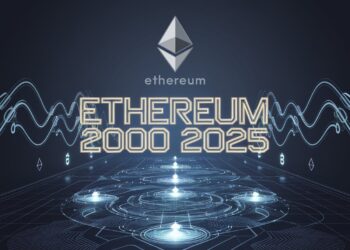Imagine waking up to find your investment slashed by 90% in mere hours. This was the grim reality for holders of Mantra’s OM token on April 13, 2025, when a catastrophic crash wiped out billions in market value. The blockchain, known for its focus on real-world asset (RWA) tokenization, now faces a pivotal moment. Can a bold move to destroy 150 million tokens salvage its reputation and stabilize its ecosystem, or is it a desperate act too late to matter?
Mantra’s OM Token Crisis: A Deep Dive
The cryptocurrency market is no stranger to volatility, but Mantra’s OM token collapse was a shock even by crypto standards. In a matter of hours, the token’s price plummeted from $6.30 to under $0.50, erasing over $5 billion in market capitalization. The fallout left investors reeling and sparked heated debates about the project’s stability and leadership.
What Triggered the Collapse?
The crash’s origins remain contentious. Initial reports pointed to massive liquidations on exchanges, with over $71 million in long positions wiped out, particularly on Bybit during low-liquidity hours. Blockchain data revealed that 17 wallets moved 43.6 million OM tokens—worth $227 million at the time—to exchanges like Binance and OKX just before the sell-off, fueling speculation of insider activity.
The movement of millions of OM tokens to exchanges before the crash is a strong signal of coordinated dumping.
– Blockchain Analyst
Mantra’s team attributed the crash to “reckless liquidations” by exchanges, denying any direct involvement. However, community skepticism persists, particularly over undisclosed over-the-counter (OTC) sales, which some allege were used to manipulate liquidity.
OTC Sales
Over-the-counter sales refer to private transactions of tokens outside public exchanges, often at discounted rates, used to raise funds or manage liquidity.
The Token Burn Proposal: A Bold Recovery Plan
In response to the crisis, Mantra’s CEO, John Patrick Mullin, turned to the community for guidance. A poll offered four options: burn tokens, extend vesting periods, implement a community multisig, or unlock tokens gradually. The community overwhelmingly chose the first, with 82% voting to destroy Mullin’s 150 million OM token allocation.
On April 21, 2025, Mantra announced the burn would proceed. The 150 million tokens, valued at roughly $80 million at current prices, are being unstaked from the “Team and Core Contributor” bucket, with the process set to complete by April 29. Once unstaked, they will be sent to a burn address, permanently removed from circulation.
- Immediate Impact: Reduces total OM supply by 150 million, roughly 8.3% of the 1.8 billion total.
- Staking Benefits: Lowers the bonded ratio, potentially increasing staking rewards for remaining holders.
- Community Signal: Aims to rebuild trust by showing leadership’s commitment to the project’s longevity.
A Second Burn: Doubling Down on Scarcity
Mantra isn’t stopping at 150 million. The team is negotiating with ecosystem partners to burn an additional 150 million OM tokens, potentially slashing the supply by 16.5% in total. If successful, this $160 million reduction could further tighten supply, theoretically supporting price recovery.
Burning tokens reduces circulating supply, which can increase scarcity and, in theory, drive up value if demand remains steady. However, market sentiment and broader conditions play a significant role.
This dual-burn strategy is a high-stakes gamble. While it signals commitment, it also reduces the team’s stake, potentially limiting their ability to fund future development. The community’s response has been mixed, with some praising the transparency and others questioning the burns’ efficacy.
Why the Market Isn’t Convinced
Despite the burn announcement, OM’s price has stagnated around $0.50, showing no significant rebound. Several factors contribute to this lukewarm response. First, the burned tokens were already locked in staking and vesting, meaning they weren’t circulating and thus had limited immediate impact on market dynamics.
Second, lingering distrust stems from allegations of OTC sales. Critics argue that Mantra used these sales to prop up liquidity artificially, only to repurchase tokens on public markets, creating a misleading picture of demand. Such practices, if true, undermine confidence in the burn’s intentions.
| Metric | Pre-Crash | Post-Crash |
|---|---|---|
| OM Price | $6.30 | $0.50 |
| Market Cap | $6.17B | $0.68B |
| Staked Tokens | 571.8M | 421.8M |
Mantra’s Broader Vision: RWA Tokenization
Mantra’s core mission is to bridge traditional finance and blockchain through RWA tokenization. By digitizing assets like real estate and data centers, it aims to unlock liquidity and democratize access to high-value markets. A $1 billion partnership with UAE-based DAMAC Group in January 2025 bolstered its credibility, driving OM’s value before the crash.
The crash, however, has cast doubt on Mantra’s ability to deliver. Investors question whether the project can regain momentum, especially with competitors like Chainlink and Avalanche vying for dominance in the RWA space. The burn may signal commitment, but execution remains critical.
Community Sentiment and Social Media Buzz
Social media platforms have been ablaze with reactions to Mantra’s predicament. Some users applaud Mullin’s willingness to sacrifice his allocation, viewing it as a rare act of accountability in crypto. Others remain skeptical, pointing to the project’s governance structure, where Mantra wallets hold over 71% of voting power, limiting true community control.
Burning tokens is a start, but until Mantra addresses the OTC sales and governance issues, trust will be hard to rebuild.
– Crypto Community Member
Posts on platforms like X reflect this divide. While some see the burn as a bullish signal, others dismiss it as a publicity stunt, arguing that the damage is already done. This polarized sentiment underscores the challenge Mantra faces in unifying its community.
The Staking Angle: A Silver Lining?
One potential upside of the burn is its impact on staking rewards. By reducing the number of staked tokens from 571.8 million to 421.8 million, Mantra expects to lower the bonded ratio from 31.47% to 25.30%. This adjustment could boost annual percentage rates (APRs) for stakers, incentivizing long-term holding.
Bonded Ratio
The percentage of a blockchain’s total token supply that is staked, influencing staking rewards and network security.
For investors still holding OM, higher staking yields could offset some losses, provided they believe in Mantra’s long-term vision. However, with the token’s price still languishing, convincing new stakers to join may prove challenging.
Lessons from Other Crypto Crashes
Mantra’s crash echoes other high-profile crypto failures, though it differs in key ways. Unlike Terra Luna, which collapsed due to systemic flaws in its algorithmic stablecoin, Mantra’s issues appear tied to liquidity and market dynamics rather than fundamental design flaws. Still, the parallels highlight the fragility of investor confidence in crypto.
Projects like Bitconnect and SafeMoon also faced backlash over insider sales and token burns that failed to restore trust. Mantra must avoid these pitfalls by pairing its burn with transparent communication and tangible progress on its RWA goals.
Can Mantra Recover?
The road to recovery is steep. The token burn, while significant, addresses only part of the problem. To regain market confidence, Mantra must tackle governance concerns, clarify OTC sale allegations, and deliver on its RWA tokenization promises. Its $109 million ecosystem fund could play a pivotal role, supporting buybacks, partnerships, and development.
- Transparency: Full disclosure of past OTC sales and future financial strategies.
- Governance Reform: Reducing team voting power to empower the community.
- RWA Milestones: Executing on partnerships like DAMAC to prove real-world utility.
The broader crypto market’s trajectory will also influence Mantra’s fate. With some analysts predicting a bear market through Q3 2025, external pressures could hinder recovery. Conversely, a bullish altcoin season, as some forecast, might lift OM alongside other tokens.
What Investors Should Watch
For those considering Mantra’s OM token, caution is warranted. The burn’s completion on April 29 will be a key milestone, as will negotiations for the additional 150 million token burn. Investors should also monitor Mantra’s progress on RWA projects and any updates on governance reforms.
Key Takeaways
- Mantra’s OM token crashed 90% on April 13, 2025, due to liquidations and alleged insider activity.
- A 150 million token burn, with a potential additional 150 million, aims to reduce supply and boost staking rewards.
- Community trust remains fragile, with OTC sales and governance issues fueling skepticism.
- Mantra’s recovery hinges on transparency, RWA execution, and market conditions.
Mantra stands at a crossroads. The token burn is a bold step, but its success depends on rebuilding trust and delivering value. As the crypto world watches, the question remains: can Mantra rise from the ashes, or will it fade into obscurity? Only time will tell.












